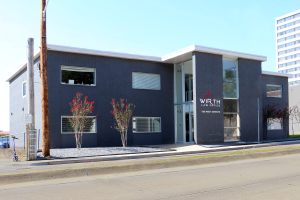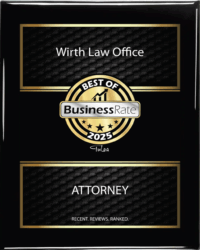Divorce, Legal Separation, and Paternity Case Fall Under Domestic Proceeding.

Video Transcribed: How does it work when a protective order is filed and there’s also another domestic proceeding, like a divorce or legal separation or a paternity case? I’m Tulsa attorney, James Wirth, I’m about to explore that topic.
Okay. If there’s a divorce that’s pending or a legal separation case that’s pending or a custody case, any kind of domestic case, guardianship even or adoption, if those are pending already in the court, then most of the time if somebody tries to file a protective order and the parties are the same parties, that it will be filed as a separate case, but they’ll be consolidated and they’ll be set before the judge that has the regular domestic case rather than the judge that might’ve otherwise handled the protective order case.
 Similarly, if a protective order is filed, but there are other issues, like the parties are married and they may be contemplating a divorce or legal separation or the parties have a child together, then either one of those parties could file a case related to that.
Similarly, if a protective order is filed, but there are other issues, like the parties are married and they may be contemplating a divorce or legal separation or the parties have a child together, then either one of those parties could file a case related to that.
And then that case will be ripped away from the judge that handles the protective order docket, if it’s in a county like Tulsa County, and it will be transferred and consolidated before the judge that is assigned ultimately to the divorce, legal separation, a paternity, custody case.
So sometimes that can be used as a strategy by parties in order to kind of pick venue because if you want it heard before a certain judge rather have it on with the FD, we call, judge or the domestic judge rather than the protective order judge, then you file that.
Also, if you need a continuance, sometimes that can be a basis to get a continuance. Rather than it being heard by the regular protective order judge, you note that you filed a domestic case. The judge then will continue it to be heard before that other judge.
Other ways that they interact together. Although protective orders are not supposed to be used to effectuate property division or custody or visitation, in the short term, they do have that effect. So, if a child is put on a protective order, even though there may be an order in place that grants that other party custody or visitation, that protective order, at least temporarily, supersedes that and prevents them from having those. So for that reason, they do need to be before the same judge, and because of how they interact, sometimes they’re used strategically even though they shouldn’t be.
But if you’re involved in that situation, don’t take this general information. Get advice from an attorney based on your specifics. If you want to talk to an attorney, want to talk to me, you can give me a call 918-932-2800 or go to my website, wirthlawoffice.com.




























